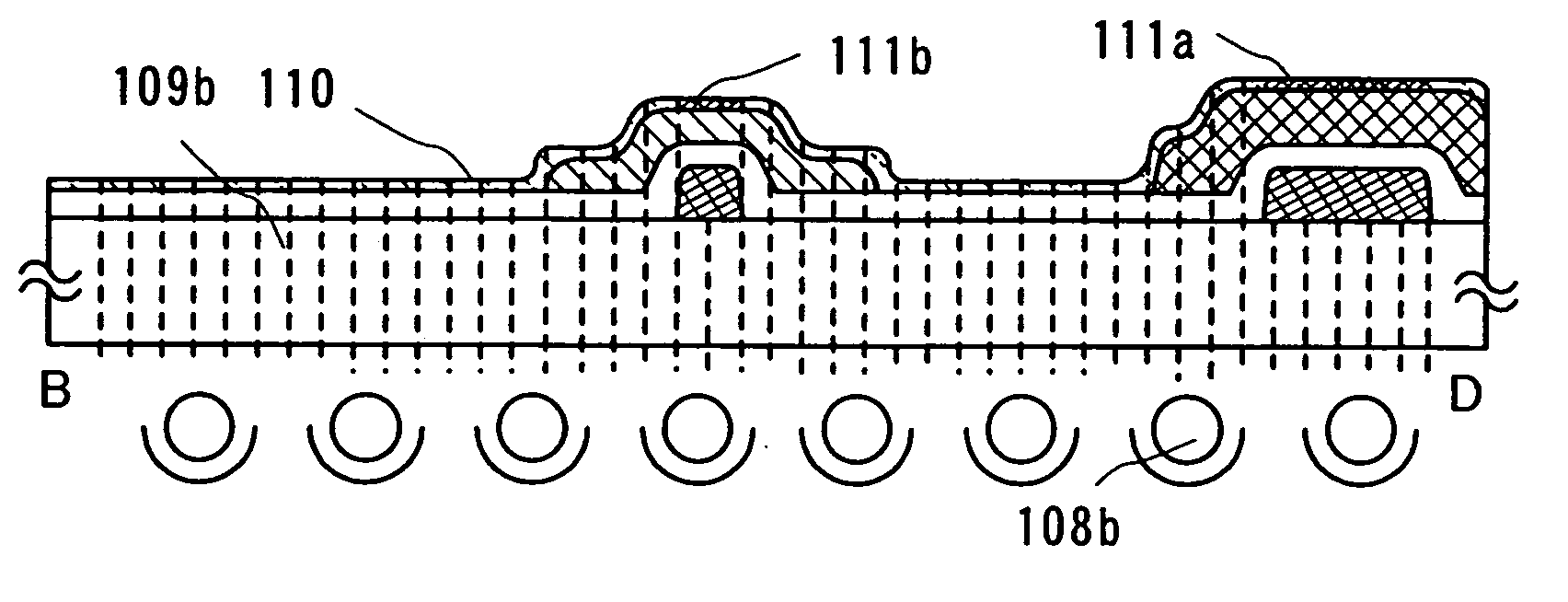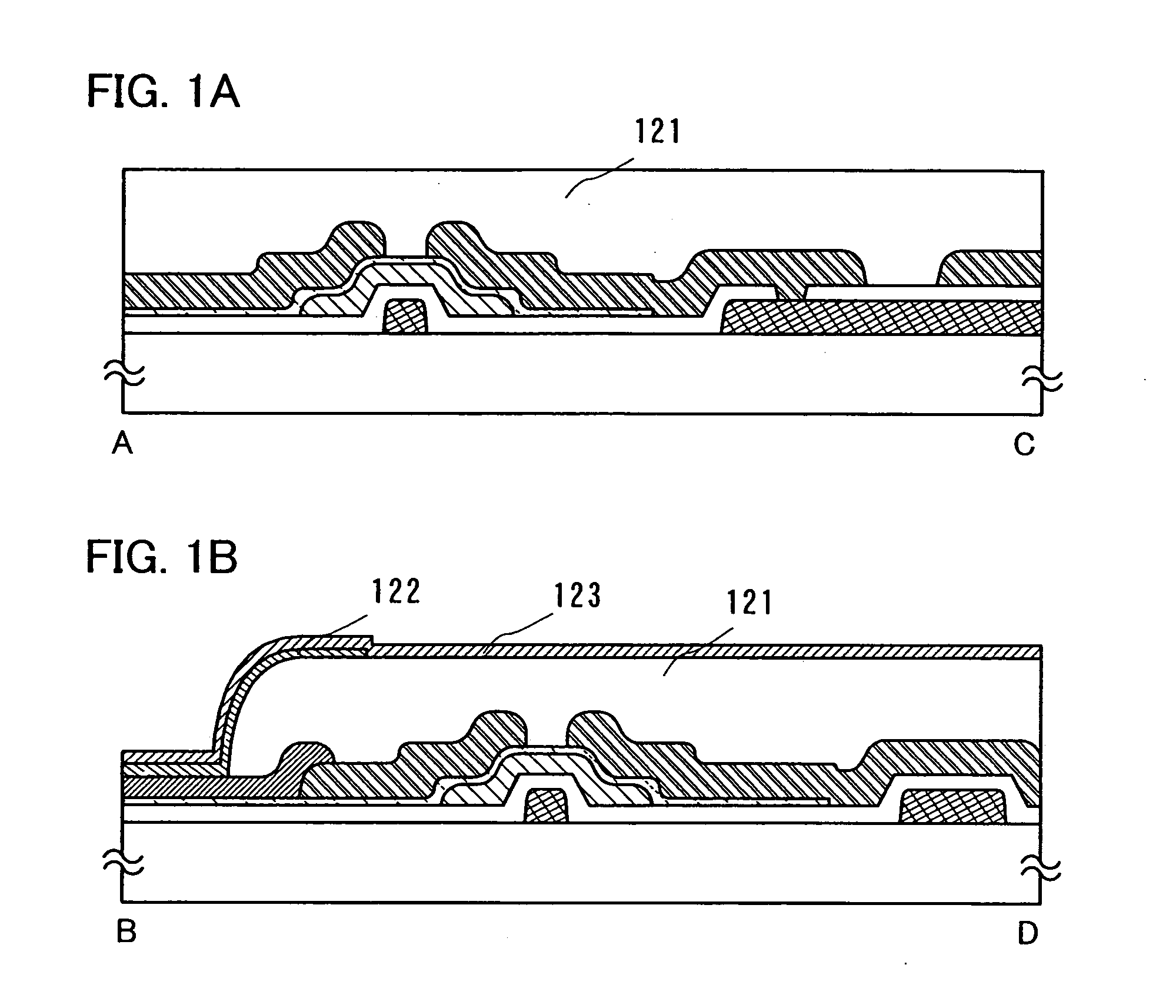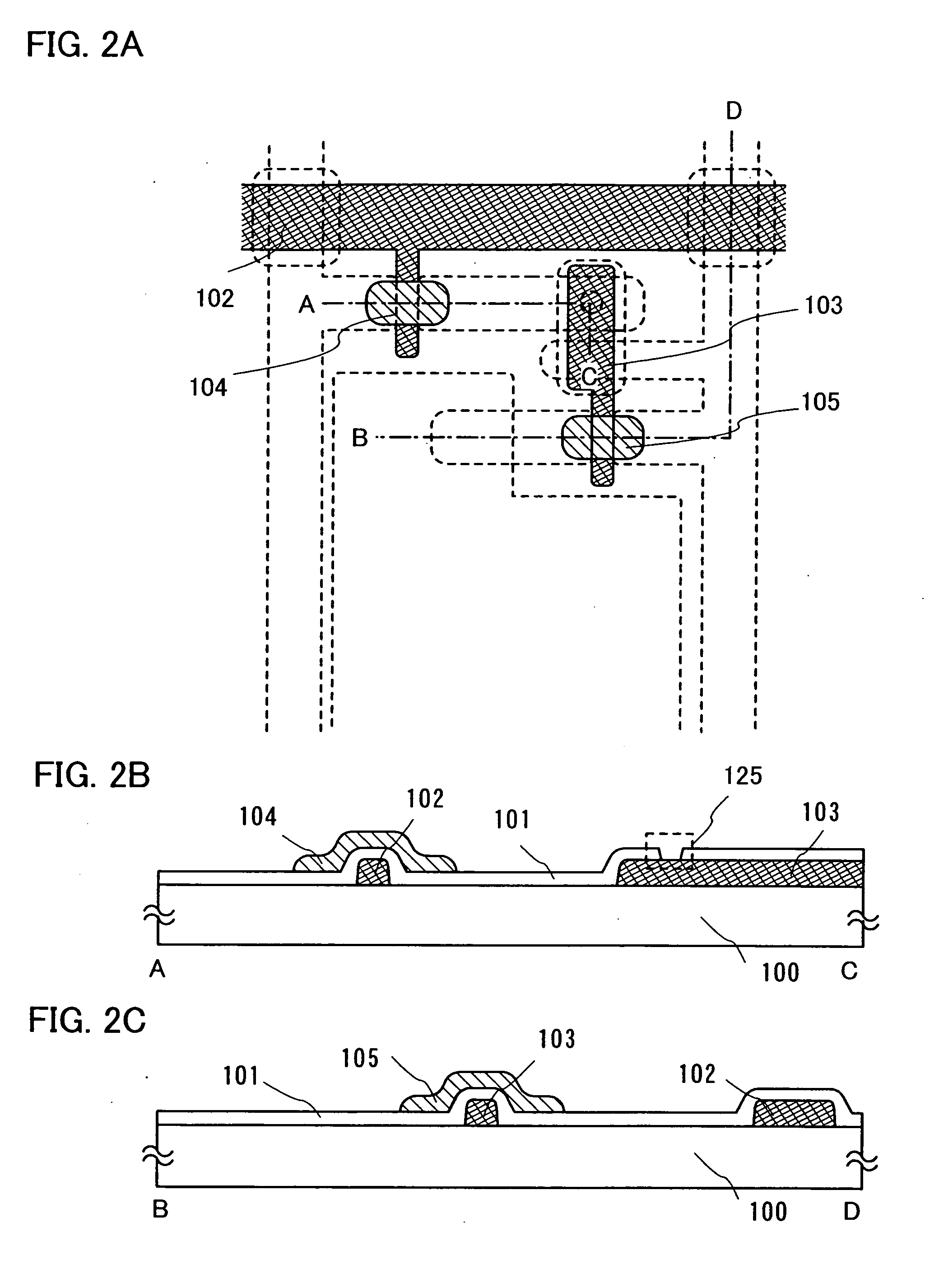Method for manufacturing display device
a display device and manufacturing method technology, applied in semiconductor devices, liquid surface applicators, coatings, etc., can solve the problems of increasing manufacturing costs eventually, and achieve the effects of reducing costs, good controllability, and minimal material loss
- Summary
- Abstract
- Description
- Claims
- Application Information
AI Technical Summary
Benefits of technology
Problems solved by technology
Method used
Image
Examples
embodiment mode 1
[0050]FIG. 25(A) is a top view showing a structure of a display panel according to the present invention. A pixel portion 2701 in which pixels 2702 are arranged in a matrix form, a scanning line side input terminal 2703 and a signal line side input terminal 2704 are formed over a substrate 2700 with an insulated surface. The number of pixels may be determined in accordance with various standards. The number of pixels for XGA may be 1,024×768×3 (RGB), and that for UXGA may be 1,600×1,200×3 (RGB). In the case of forming a display panel corresponding to a full-specification high-definition, the number of pixels may be 1,920×1,080×3 (RGB).
[0051] The pixels 2702 are arranged in a matrix form by intersecting scanning lines that extend from the scanning line side input terminal 2703 with signal lines that extend from the signal line side input terminal 2704. Each pixel 2702 includes a switching element and a pixel electrode connecting to the switching element. A TFT is a representative ex...
embodiment mode 2
[0141] An embodiment mode of the present invention will be described using FIG. 8 to FIG. 11(B). Specifically, a method for manufacturing a display device having a coplanar type thin film transistor to which the present invention is applied will be described. FIG. 8 is a top view of a pixel portion of a display device. FIG. 9(A) to FIG. 10(C) are cross sectional views along a line E-F of FIG. 8 showing respective process of manufacturing the display device. FIG. 11(A) is also a top view of the display device. FIG. 11(B) is a cross sectional view along a line O-P (including a line U-W) of FIG. 11(A). Further, an example of a liquid crystal display device that uses a liquid crystal material as a display element is shown. Therefore, the same portions or portions having the same functions will not be repeatedly explained.
[0142] A gate electrode layer 254a, a gate electrode layer 254b, and a gate electrode layer 254c are formed over a substrate 250 having a light-transmitting property. ...
embodiment mode 3
[0181] An embodiment mode according to the present invention will be described with reference to FIG. 12(A) to FIG. 17(B). In this embodiment mode, a display device is formed using a thin film transistor of inverted coplanar type as a thin film transistor. An example of a liquid crystal display device using a liquid crystal material as a display element is shown. Accordingly, the same part or a part having similar function will not be repeatedly explained. Each of FIG. 12(A) to FIG. 17(A) shows a top view of a display device, each of FIG. 12(B) to FIG. 17(B) shows a cross-sectional view taken along line G-H in FIG. 12(A) to FIG. 17(A).
[0182] Also in this embodiment mode, a light irradiation treatment is carried out through a substrate to modify the irradiated region to change the wettability thereof by using the photo activity of a photocatalytic substance.
[0183] A gate electrode layer 301 and a gate electrode layer 303, and a capacitor wiring layer 326 are formed on the substrate...
PUM
 Login to View More
Login to View More Abstract
Description
Claims
Application Information
 Login to View More
Login to View More - R&D
- Intellectual Property
- Life Sciences
- Materials
- Tech Scout
- Unparalleled Data Quality
- Higher Quality Content
- 60% Fewer Hallucinations
Browse by: Latest US Patents, China's latest patents, Technical Efficacy Thesaurus, Application Domain, Technology Topic, Popular Technical Reports.
© 2025 PatSnap. All rights reserved.Legal|Privacy policy|Modern Slavery Act Transparency Statement|Sitemap|About US| Contact US: help@patsnap.com



